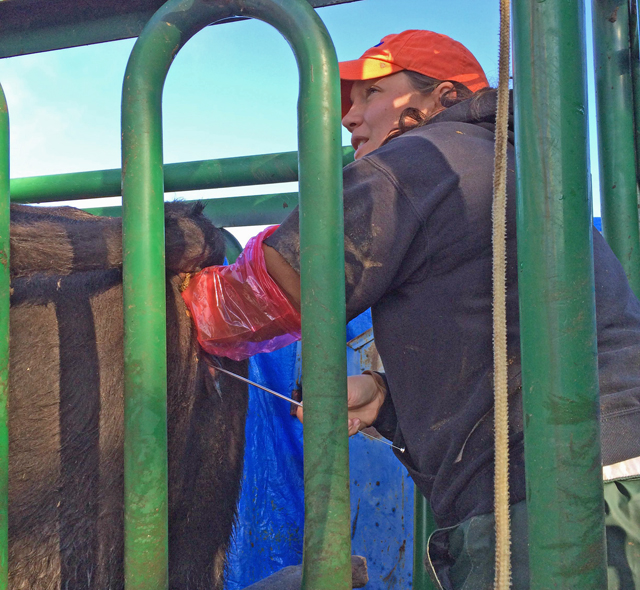Glenn Selk, Oklahoma State University Emeritus Extension Animal Scientist
As the breeding season for spring calving herds is getting underway, understanding heat stress in cattle takes on increased importance. Producers that choose to synchronize and then artificially inseminate replacement heifers or adult cows may have already started, or will begin the process in the next few weeks. If the hot weather arrives during the AI breeding season, some management and breeding alterations may be helpful.

Kalyn Waters, Holmes County Extension Director, is teaching local ranchers the techniques to utilize synchronization and A.I. breeding in their beef herds. Credit: Kalyn Waters, UF/IFAS
For years, producers that bred artificially upon detected standing estrus (heat), would wait 12 hours before breeding the female in heat. If she was first observed in standing heat in the morning, she would be inseminated that evening. If she was first observed in standing heat in the evening, she would be inseminated the following morning. This was called the AM/PM rule of artificial insemination. More recent extensive research with dairy cattle has indicated that there is no significant advantage to the AM/PM rule. Similar pregnancy rates have resulted from inseminating in the morning only compared to following the AM/PM rule. Plus new research at Oklahoma State University on the internal temperature of heat stressed cattle adds even more concern about handling and inseminating cattle in the evening.
Research with rumen temperature boluses has shown that the core body temperature of beef cows peak at 2 to 5 hours after the highest daytime temperature (Pye, Boehmer, and Wettemann. 2011 ASAS Midwest Abstracts Page 104; Abstract 285). On a hot spring/summer day the highest daytime temperature is often late afternoon. Therefore the peak body temperature of cattle will occur at 6 PM to 11 PM. Elevated core body temperatures have been linked to reduced pregnancy rates in heat stressed cattle.
Inseminating all cattle in the morning hours would avoid the heat stress of evening breeding. Some would be bred at first standing heat, others would be bred at the conventional 12 hours after standing heat. If timed AI is the method of choice, cattle working (especially the actual insemination) should be scheduled for the morning hours.
